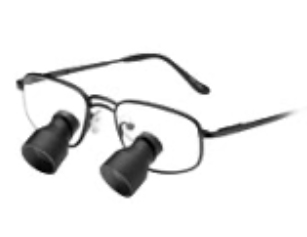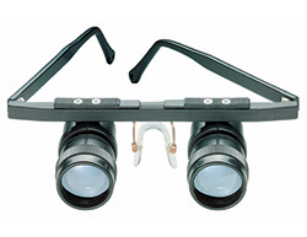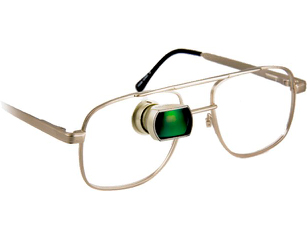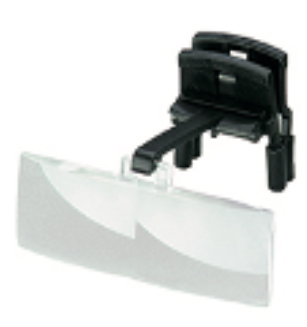Low Vision
Every person with vision loss should be able to perform their daily activities independently. Whether you’re experiencing vision lost for the first time or have never had full vision, Roswell Eye Clinic can help.
What Is Low Vision?
People with low vision are not blind; they have some useful sight. Low vision is the term used to describe reduced vision, which typically occurs in two ways.
- Blurred Vision (usually 20/70 or worse) that cannot be fully corrected with eyeglasses, contact lenses or eye surgery.
- Incomplete Field of View (i.e. visual field)
The degree of their visual impairment can make reading, driving/commuting independently, watching television, using a computer and shopping more difficult or impossible. In turn, people with low vision often feel shut off from the world and completely dependent on friends and relatives. Among visually impaired Americans of ages 21 to 64, only 43.7% are employed (compared to 80% of normally sighted people) according to Lighthouse International.
The primary causes of low vision are eye diseases (such as macular degeneration, glaucoma and diabetic retinopathy). However, low vision also can be inherited or caused by an eye or brain injury. Although children and adults can be visually impaired, low vision is mostly a problem that afflicts seniors. Vision loss – especially after a lifetime of good eyesight – can be very traumatic, leading to frustration and depression.
Low Vision Devices
There are many low vision devices and strategies that can help visually-impaired individuals get the most out of their remaining sight and, in many cases, continue to live independently.
Telescopes
Reading Telescopes are telescopic systems designed for occupation and reading distances. They allow an increased working distance from that which is found with a comparably-powered microscope (reading lens), while still maintaining an adequate magnification level. Students, electricians and office workers are just a few examples of those who would benefit from this type of aid. The usefulness of these units, however, should not be considered to be limited to low vision patients. Anyone whose “seeing” requires more than normal visual acuity would benefit from these aids.
Full Diameter Telescope (Galilean Telescopes) are designed for distance tasks that are to be performed while the patient is stationary. Mobility is not practical, since walking with Full Diameter Telescopes would be analogous to walking while looking through a pair of binoculars. These telescopes are especially suited for such distance tasks as watching T.V., going to the theatre, sporting events, or viewing distant stock market quotations – anything that can be done while the patient is stationary.
Bioptic Telescope The Bioptic Telescope provides patients with the benefits of a telescopic system while still maintaining mobility. Mounted high in the carrier lens, the telescope is “out of the way” while the patient is moving about or doing general work, but is always available for distance spotting. Patients simply need to drop their head slightly to bring the telescope into alignment with their eyes. This is important, because the patient does not use this telescope all of the time (as with the Full Diameter Telescope), but only when viewing a distant object magnified. With this principle in mind, one can see why Bioptic Telescopes have been prescribed for students who need to view the chalkboards in the classroom while still being able to see up close, for people who need to spot distant signs while moving or for any situation requiring a greater flexibility to meet constantly changing visual demands.
Near/Intermediate Vision low vision aids
- Closed-circuit television (CCTV) is one of the more common and popular high-tech aids for low vision. CCTV’s magnify reading material, medicine bottles, photos, etc. and display the image on a monitor. CCTV’s can also be used for writing, filing fingernails, and other tasks. Some can even read the text presented as well! CCTV’s have a range of magnification and are made in either black and white or in color. Many can be switched to reverse the image colors when desired. Some models require you to focus the camera; others do it automatically.
Desktop Video Magnifiers
Handheld Video Magnifiers
Visual Field Expander
Visual Field Expanders are generally prisms or other special lenses built in to eyeglass frames. When magnifying lenses are used, the expansion of the field reduces the size of the image and a tradeoff occurs. This effect can be seen on some automotive side mirrors that give an expanded field, but reduce the size of objects in that field. It is also the same effect observed when viewing a map on the computer screen. As you zoom out the field is expanded, but the image has less detail. The image is not reduced in size when prism lenses are used to expand the field.
Magnifiers
Stand Magnifier
Clip-On Magnifier
Handheld Magnifier
Lamp Magnifier
Colored Lenses

- Contrast Enhancement
- Patients with low vision may also suffer from reduced contrast sensitivity. Lenses to increase contrast can help.
- Filtering Lenses
- When it comes to Low Vision, Traumatic Brain Injury (TBI) and migraines, filtering lenses that blocking specific wavelengths can help tremendously.
Low Vision Aids for Computer Users
In general, visually-impaired people can use the same low vision aids for viewing a computer screen and reading e-mail as they do for other reading activities. In addition, special software has been developed to increase the size of print and images on computer screens and convert printed information into audible messages that are “read” by a synthetic voice.
These innovative low vision devices let partially-sighted people do the same computer-related tasks as fully-sighted people – such as word-processing, creating and using spreadsheets and viewing Web pages online.
- Increasing Print and Image Sizes
- Most computer operating systems and Internet browsers allow you to increase the size of Web pages and text on your computer screen to make them more visible to partially-sighted users.
- Talking Computers
- People with tunnel vision from glaucoma or central blind spots from macular degeneration may find it difficult and tiring to read an entire computer screen. This is one reason that “talking computers” were invented.
- Talking computers are based on optical character recognition (OCR) systems that first scan text in a word processing document or Web page, and then convert the text to sounds. The result is a synthetic voice that reads aloud not only the actual text but also important navigation items such as the cursor location. Voice systems are available from several major software companies.
Low Vision Therapy
Roswell Eye Clinic’s low vision specialist doctor can prescribe appropriate low vision aids. If necessary, we can refer you to one of our Vision Therapists to teach you how to use the low vision aids to accomplish your vocational (relating to an occupation) and avocational (relating to hobbies) activities independently. Learn more about vision therapy.
Our Cataract Specialists: Dr. Sarah Flanagan, Dr. Scott Moscow, Dr. Ashleigh Sprouse














